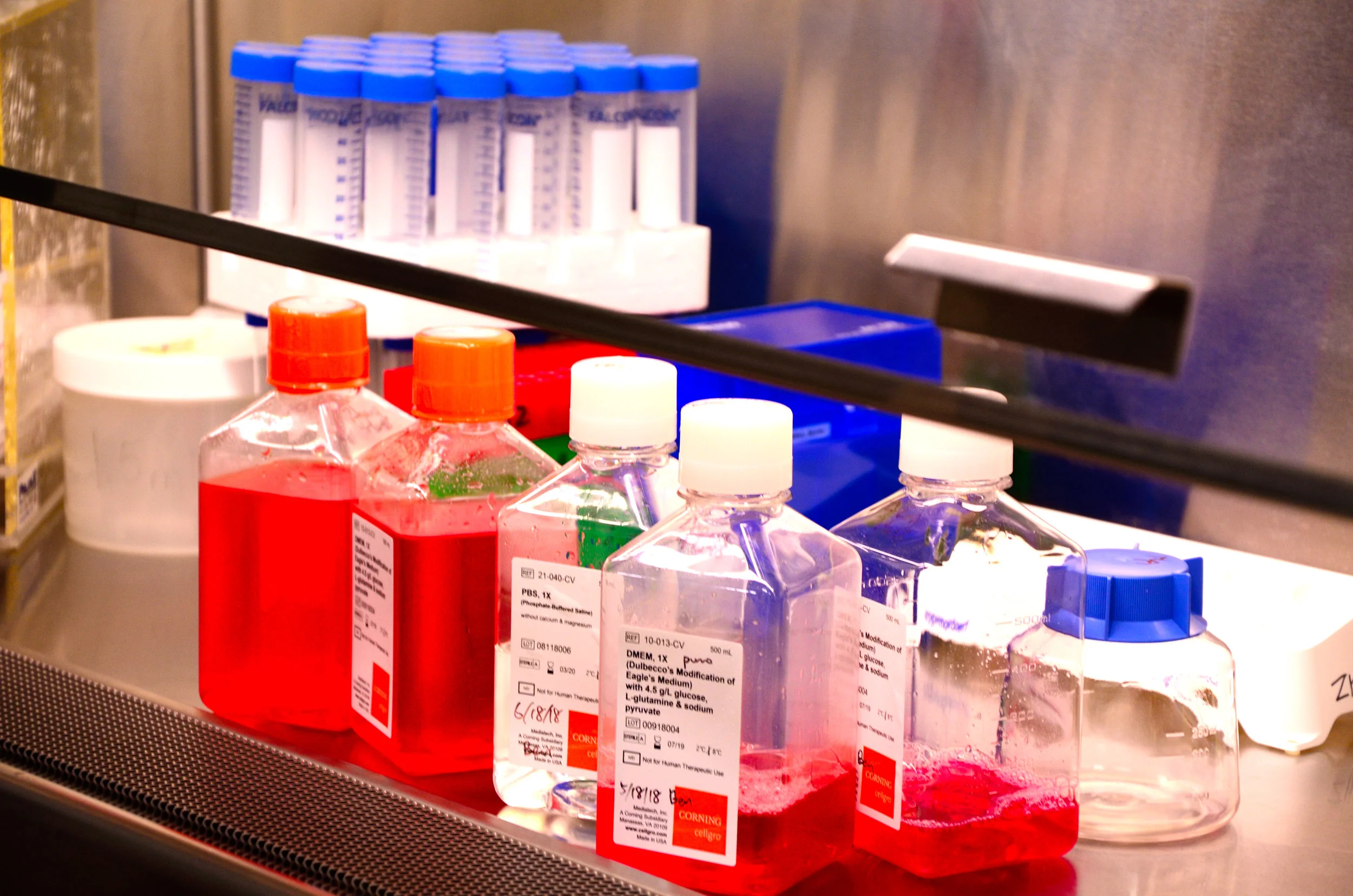Professor, Department of Internal Medicine, Section of Molecular Medicine, and
Department of Biochemistry
Wake Forest School of Medicine
Redox Biology & Medicine Ctr
Cardiovascular Sciences Ctr
Comprehensive Cancer Center
Nutrition Research Center (NRC) Building, G-55, Medical Center Blvd, Winston-Salem, NC 27157
rasmis@wakehealth.edu
Education and Training
Diploma, Chemistry (1984)
Ph.D., Biochemistry (1989)
Postdoc, Biochemistry (1989-92)
Postdoc, Macrophage Biology (1992-1995)
University of Fribourg, Switzerland
University of Fribourg, Switzerland
University of California San Diego
University of Berne, Switzerland
Prior Positions
Independent Group Leader, Institute of Biochemistry, University of Basel, Switzerland, 1995 – 2000
Assistant Professor, Department of Medicine and Physiology, Associate Member, Graduate Center, Nutritional Sciences University of Kentucky, 2000 – 2003
Associate Professor, Departments of Medicine and Physiology, Full Member, Graduate Center, Nutritional Sciences University of Kentucky, 2003 – 2005
Director of Graduate Studies, Graduate Center, Nutritional Sciences, University of Kentucky, 2003 – 2005
Associate Professor, Department of Medicine and Biochemistry, University of Texas Health Science Center at San Antonio (UTHSCSA), 2005 – 2007
Associate Professor, Department of Biochemistry, UTHSCSA, 2007 – 2009
Director of Research Development, Office of the Dean, School of Health Professions, 2007 – 2011
Member, Barshop Institute of Longevity & Aging Studies, UTHSCSA, 2006 – 2017
Professor, Departments of Clinical Laboratory Sciences and Biochemistry, UTHSCSA, 2009 – 2017
Adjunct Professor, Department of Biology University of Texas at San Antonio (UTSA), 2011 – present
Associate Dean, Graduate School of Biomedical Sciences, 2012 – 2014
Program Director, Integrated Biomedical Sciences (IBMS), 2013 – 2014
Associate Director, Biomedical Engineering Program, 2013 – 2015
Senior Associate Dean, Graduate School of Biomedical Sciences, 2014 – 2016
Adjunct Professor, Department of Biochemistry and Structural Biology, UTHSCSA, 2017 – present
Research Focus
Methods and Technologies
Mouse models of diabetes, obesity and atherosclerosis
Genetic mouse models
Gene transfer in vitro and in mice
Design of macrophage-specific overexpression and knockdown vectors
Redox biochemistry and redox proteomics
FACS
Automated monocyte and macrophage isolation from blood and tissues
Single Cell Western Blotting
Antibody development
Drug and technology development and commercialization
Monocytes and macrophages are essential for tissue and metabolic homeostasis, but in the context of metabolic disorders become dysfunctional and promote chronic inflammatory diseases, including obesity and atherosclerosis. Monocyte and macrophage dysfunction has emerged as a fundamental process common to many chronic inflammatory diseases associated with metabolic disorders, and thus has become a major focus for the design of new pharmacological and therapeutic interventions. My federally funded research programs are shaping this cutting-edge and rapidly expanding field. We employ a wide array of biochemical, cell biological, redox proteomics, imaging, animal models and translational approaches to explore novel aspects of macrophage biology in the context of human vascular diseases, obesity and diabetic complications. Our approach is to build on fundamental discoveries at the molecular and cellular level and to translate these into animal models and ultimately, into patient settings.
Inside the Lab
My group’s three main projects are listed below. In summary, these projects address the molecular mechanisms of thiol redox signaling in monocytes and macrophages and their dysregulation by metabolic stress, explore the roles for 23-hydroxy ursolic acid and related triterpenoids in the prevention and treatment of obesity and micro- and macrovascular diseases associated with metabolic disorders, and seek to develop new molecular imaging reagents targeting tissue macrophages for the non-invasive detection and monitoring of atherosclerosis and aneurysms.
1. Glutathione in Macrophage Function, Signaling and the Development of Atherosclerosis
My early work in the field of redox signaling grew out of my studies on the role of dietary antioxidants in macrophage cholesterol metabolism, foam cell formation, and cell death. These studies focused on the role of glutathione and glutathione reductase in macrophage injury and cell death induced by oxidized LDL. My group was the first to describe a caspase-independent mechanism for OxLDL-induced macrophage death and went on to identify the GSH-dependent antioxidant system as a central regulator of macrophage survival, both in vitro and in mouse models of atherosclerosis and adriamycin toxicity. We were also the first to identify Nox4 as a novel inducible source of “redox signaling” in monocytes and macrophages and demonstrated that Nox4 plays a critical role in macrophage death.
2. Redox Signaling in Macrophages
We were one of the first groups to identify protein S-glutathionylation in macrophages as a reversible posttranslational protein modification associated with oxidative and metabolic stress, both in vitro and in murine model of metabolic disorders. We showed that the degree of protein S-glutathionylation in macrophages directly correlated with the severity of both metabolic stress and vascular complications, including atherosclerotic lesion size and renal dysfunction. Furthermore, we were able to demonstrate that a number of key signaling molecules are regulated by S-glutathionylation of cysteine residues, essential for their activity, and in several instances their expression levels, and provided the first evidence that Nox4 may play a role in thiol oxidation and protein S-glutathionylation. We also were the first to report that metabolic stress-induced protein S-glutathionylation in murine macrophages is sexually dimorphic, differing significantly in the proteins and pathways affected between macrophages isolated from dyslipidemic male and female mice.
3. MKP-1 in Metabolic Stress-Induced Monocyte “Priming” and Macrophage Dysfunction
We showed that metabolic stress promotes monocyte “priming” and dysfunction, converting these cells into a hyper-chemotactic pro-atherogenic and obesogenic phenotype. This process is mediated by protein S-glutathionylation-induced reprogramming of the monocyte proteome. “Primed” monocytes give rise to macrophages with dysregulated activation profiles, i.e. hyper-inflammatory and muted inflammation resolving phenotypes. The S-glutathionylation and de-glutathionylation cycle forms a redox signaling system that regulates not only signaling and metabolic pathways in monocytes and macrophages, but also key functions in these cells, including adhesion, migration, autophagy and apoptosis, as well as phenotypic plasticity and polarization. One of the molecules targeted by metabolic stress-induced S-glutathionylation is MKP-1, which we subsequently identified as a master regulator of macrophage function and plasticity. Our studies identified the molecular basis for a novel causal relationship that explains the well-established associations between metabolic disorders, oxidative stress, and cardiovascular diseases.



